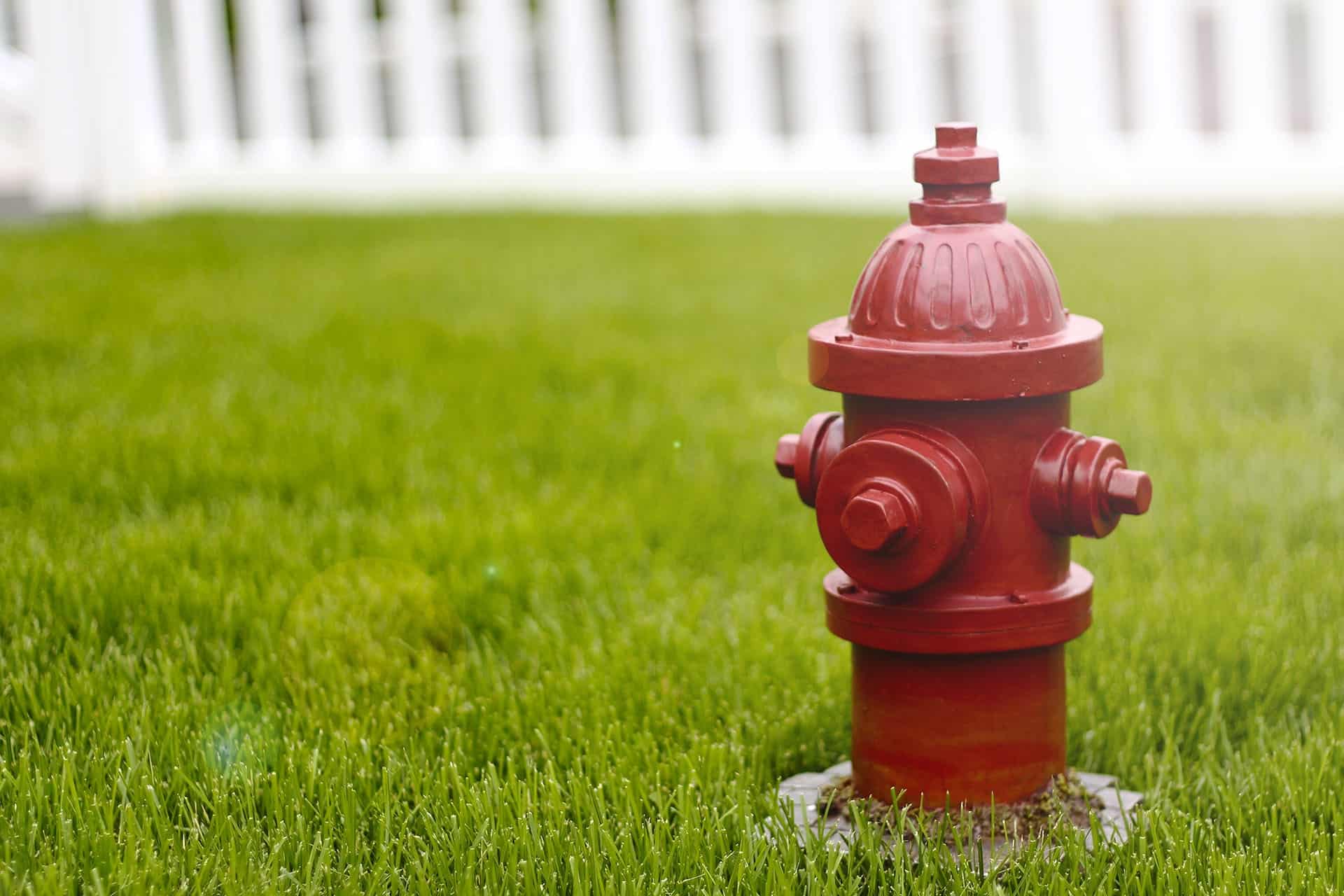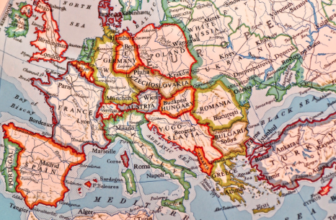
Fire hydrants are a crucial part of a city’s infrastructure, providing a vital water supply for firefighters to combat fires effectively. These iconic devices are commonly found along streets. They are easily recognizable by their distinctive appearance.
Cities are filled with these hydrants, with Chicago alone being home to over 50,000.
When spotting these city stand-bys, have you ever wondered how fire hydrants work? How do they do what they do, and why do we have them anyway?
Read on, and we will delve into the inner workings of fire hydrants…their functions, types, history, and maintenance.
History of the Fire Hydrant
The concept of using water to extinguish fires has been documented in ancient civilizations such as Egypt, Rome, and Greece. These early societies employed water delivery systems consisting of aqueducts, cisterns, and manual pumps to fight fires.
The Romans were pioneers in developing organized firefighting systems. They constructed an extensive network of aqueducts to supply water to cities.
They implemented a system known as “water allocation.” This system involved dividing the city into sectors and assigning specific teams responsible for firefighting duties.
In the 17th century, wooden water pipes began to replace earlier systems. These hollowed-out logs or planks were used to transport water from nearby sources to the site of a fire. Hydrants, or outlets, were created by drilling holes into the wooden pipes.
Prior to the invention of fire hydrants, firefighting relied heavily on manual labor. Firefighters used leather buckets to carry water from water sources to the fire. Hand-operated pumps, such as the “bucket brigade,” were also utilized to create a continuous flow of water.
The 18th century saw the emergence of “post hydrants” in Europe. These hydrants consisted of vertical wooden posts with water outlets. Firefighters could attach their hoses directly to these posts, eliminating the need to transport water manually.
This is the beginning of the idea of the modern hydrant.
The modern fire hydrant as we know it today owes its origins to John B. Farnham, an engineer from Massachusetts, USA.
In 1801, Farnham invented the cast iron fire hydrant, which featured an underground valve system connected to an above-ground outlet. This design allowed for easier access to water and reduced the risk of freezing in colder climates.
Fire Hydrant Components
A typical fire hydrant consists of several components, each playing a crucial role in its operation. Let’s dive into them.
Barrel
The barrel is the main body of the fire hydrant. It is a vertical pipe that extends underground, connecting the water supply to the hydrant’s upper section.
Bonnet
The bonnet is the topmost part of the fire hydrant and serves as a cover for the internal mechanism. It is often painted in a distinctive color to make hydrants easily recognizable.
Valve Stem
The valve stem is a vertical rod located inside the hydrant’s barrel. It controls the flow of water from the main water supply to the outlet.
They are essential to even the most basic fire hydrant operation.
Valve Exerciser
A valve exerciser is a specialized tool or machine used to operate and exercise the valve mechanism of a fire hydrant. It is designed to ensure that the valve operates smoothly and remains functional.
Fire hydrant valves are crucial components that control the flow of water from the main water supply. However, if these valves are not regularly operated, they can become stiff or stuck due to sediments, corrosion, or lack of use.
A valve exerciser simplifies the process of opening and closing the valve of a fire hydrant.
It typically consists of a motorized or manually operated device that attaches to the operating nut of the hydrant. By using the appropriate attachments and applying controlled force, the valve exerciser rotates the valve stem, exercising the valve mechanism.
Operating Nut
The operating nut is a large, rounded cap found on top of the bonnet. Firefighters or utility personnel can open or close the hydrant valve using a specialized hydrant wrench.
Hydrant Cap
The hydrant cap is a protective cover that keeps dirt and debris out of the hydrant outlet. It is removed before attaching hoses during firefighting operations.
Outlet
The outlet is the point where firefighters connect their hoses to the hydrant. It is usually equipped with threaded connections to ensure a secure attachment.
Types of Fire Hydrants
There are two main types of fire hydrants commonly used in cities. These are dry and wet barrel hydrants.
Dry barrel hydrants are typically installed in regions where freezing temperatures occur. They feature a drain valve at the base of the barrel, below the frost line. When not in use, these hydrants are drained of water to prevent freezing and subsequent damage.
Wet barrel hydrants are prevalent in areas with milder climates. They are constantly filled with water and do not have a drain valve.
Wet barrel hydrants are less prone to freezing, making them suitable for regions where winter temperatures are not a concern.
Operating a Fire Hydrant
A big part of fire hydrant safety is knowing how to use this kind of device properly.
Luckily, fire hydrants are relatively simple to operate. Firefighters arrive at the scene and locate the nearest hydrant when a fire occurs. They remove the hydrant cap and attach their hoses to the outlet.
Then, they open the hydrant valve using a hydrant wrench.
By opening the valve, water flows from the main supply into the hydrant barrel and out through the outlet. Firefighters can control the water flow rate by adjusting the valve.
The water pressure within the network propels the water through the hoses, allowing firefighters to direct the water onto the fire.
This still takes some practice and know-how to do well, but most firefighters get familiar with the ins and outs of operation quite quickly.
Fire Hydrant Maintenance
Proper maintenance is crucial to ensure fire hydrants remain functional and ready for use. There are some key maintenance practices that cities need to keep up with.
Regular Inspection
Regular visual inspections of fire hydrants are necessary to identify any visible damage or leaks. Inspectors check for issues such as broken parts, worn-out seals, or faulty valves.
Additionally, they ensure that hydrants are visible and unobstructed.
Lubrication and Flushing
Moving parts within the fire hydrant, such as the valve stem and operating nut, require periodic lubrication to ensure smooth operation.
Lubricants help reduce friction and prevent rust or corrosion from affecting the functionality of the hydrant.
Fire hydrants should be flushed regularly to remove sediment and debris that may accumulate in the water supply. Flushing helps maintain water quality and prevents blockages that could hinder water flow during firefighting operations.
Pressure Testing
Periodic pressure testing is conducted to assess the performance and integrity of fire hydrants.
This involves checking the water pressure at the hydrant to ensure it meets the required standards. Any deviations from the acceptable pressure range can indicate a problem that needs to be addressed.
Winterization
In regions where freezing temperatures occur, winterization is essential to protect fire hydrants from damage.
Dry barrel hydrants are drained of water before winter to prevent freezing, while wet barrel hydrants may require additional measures such as insulation or heat tape to prevent freezing.
Damage and Repair
If a fire hydrant is found to be damaged or malfunctioning during inspections, prompt repairs or replacements are necessary. This ensures that the hydrant remains in optimal working condition and can be relied upon during emergencies.
Regulations for Fire Hydrants
Fire hydrants are subject to various regulations and standards to ensure their reliability and compatibility.
These standards cover aspects such as design, installation, color coding, and maintenance procedures.
Local fire departments, water utilities, and regulatory bodies work together to enforce these standards and ensure the effectiveness of fire hydrants within their jurisdictions.
Fire hydrants are often painted in specific colors to convey important information to firefighters and water utility personnel. The color coding system varies between regions but generally follows a standardized scheme.
Red is the most common color for fire hydrants, indicating that the hydrant is in proper working condition and has an adequate water supply. Yellow hydrants often indicate a reduced water supply or lower flow rate. They may be found in areas with limited water availability or lower pressure zones.
Blue or green hydrants are typically used for non-potable water sources, such as water from ponds, rivers, or lakes. They are often used for non-firefighting purposes, such as street cleaning or irrigation.
Understanding How Fire Hydrants Work
If you’ve been curious about the fire hydrants you see around your city, the above information can set the record straight on how these devices work.
Fire hydrants have been part of our society in one way or another for much of human history, so getting familiar with their inner workings can be important and rewarding.
Need more tech info and history? Keep scrolling through our blog for more.





